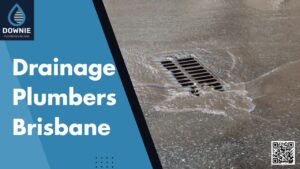Understanding Low Water Pressure
When you turn on the faucet and notice a weak flow of water, it can be frustrating. Understanding the reasons behind low water pressure is the first step towards resolving the issue. Let’s explore the common causes and the impact of low water pressure.
Common Causes of Low Water Pressure
Low water pressure can be attributed to various factors, including:
- Clogged pipes: Over time, mineral deposits, rust, and debris can accumulate inside the pipes, restricting water flow. This is especially common in older plumbing systems.
- Water leaks: Undetected leaks in the pipes can lead to a decrease in water pressure. Leaks can occur at any point in the plumbing system and should be addressed promptly.
- Faulty pressure regulator: The pressure regulator controls water flow into your home. If it malfunctions or becomes damaged, it can result in low water pressure.
- Municipal supply issues: Sometimes, low water pressure may be due to temporary issues with the municipal water supply. This can be caused by maintenance work, increased demand, or issues in the distribution system.
- Blockages in fixtures: Faucet aerators and showerheads can accumulate mineral deposits over time, reducing water flow. Cleaning or replacing these fixtures can help restore water pressure.
Impact of Low Water Pressure
Low water pressure can have a significant impact on your daily activities. It can:
- Affect shower experience: Inadequate water pressure can make it challenging to rinse off shampoo and soap effectively, resulting in a less satisfying shower experience.
- Decrease efficiency in cleaning: With low water pressure, it can be difficult to effectively clean dishes, clothes, and other items that require a strong flow of water.
- Delay filling containers: Filling large containers, such as pots for cooking or buckets for cleaning, takes longer when water pressure is low.
- Cause inconvenience: From flushing toilets to running the dishwasher, low water pressure can cause delays and inconvenience in various household tasks.
By understanding the common causes of low water pressure and the impact it can have, you can take appropriate steps to address the issue. In the next section, we will explore troubleshooting techniques and DIY solutions to help improve water pressure.
Troubleshooting Low Water Pressure
Experiencing low water pressure in your faucet can be frustrating, but there are several troubleshooting steps you can take to identify and resolve the issue. In this section, we will explore two important steps: checking for water pressure issues and identifying potential blockages.
Checking for Water Pressure Issues
Before diving into potential causes, it’s essential to determine if the low water pressure issue is limited to a specific faucet or affects multiple fixtures in your home. Start by turning on different faucets, such as those in the kitchen, bathroom, and outdoor areas, to assess if the problem is widespread. This will help you determine if the issue is isolated to a single faucet or a broader plumbing concern.
If the low water pressure is only present in one faucet, it’s likely that the problem lies within that specific fixture. However, if multiple faucets are affected, the issue may be related to the overall water supply or plumbing system in your home. In such cases, it may be necessary to contact a professional plumber to assess the situation.
Identifying Potential Blockages
Blockages within the plumbing system can contribute to low water pressure. Mineral deposits, such as limescale and rust, can accumulate over time and restrict the flow of water through the pipes and faucets. To identify if blockages are causing the low water pressure, consider the following steps:
- Inspect faucet aerators: Faucet aerators, located at the tip of the faucet, can become clogged with mineral deposits. Unscrew the aerator and clean it thoroughly, removing any debris or deposits. This simple step can often restore water pressure in the affected faucet.
- Check for pipe blockages: If cleaning the aerator doesn’t resolve the issue, there may be blockages deeper within the plumbing system. Contact a professional plumber who can assess the pipes for any obstructions. They may use specialized tools or techniques to remove the blockages and restore proper water flow.
By troubleshooting low water pressure through these steps, you can determine if the issue is isolated or requires professional intervention. Remember, regular maintenance and addressing any blockages promptly can help prevent future occurrences of low water pressure.
DIY Solutions for Low Water Pressure
Experiencing low water pressure in your faucet can be frustrating, but there are several do-it-yourself (DIY) solutions you can try before calling a plumber. In this section, we will explore two common DIY solutions for low water pressure: cleaning faucet aerators and removing mineral build-up in pipes.
Cleaning Faucet Aerators
One of the most common causes of low water pressure in faucets is a clogged or dirty faucet aerator. Over time, mineral deposits, sediment, and debris can accumulate in the aerator, obstructing the flow of water. Cleaning the aerator is a simple and effective way to restore water pressure.
To clean the aerator, follow these steps:
- Start by turning off the water supply to the faucet.
- Unscrew the aerator from the faucet spout. Use a pair of pliers if it’s difficult to remove by hand.
- Carefully disassemble the aerator, taking note of the order of the parts.
- Rinse each component under running water to remove any loose debris.
- Soak the aerator parts in vinegar for about 30 minutes to dissolve mineral deposits. Alternatively, you can use a lime scale cleaner if the build-up is severe.
- Use a small brush, like a toothbrush, to scrub away any remaining deposits.
- Rinse all the parts thoroughly with water to remove any residue.
- Reassemble the aerator and screw it back onto the faucet spout.
- Turn on the water supply and check if the water pressure has improved.
Cleaning the faucet aerator is a simple and cost-effective solution that can often resolve low water pressure issues. If you’re still experiencing low water pressure after cleaning the aerator, it may be necessary to explore other potential causes and solutions.
Removing Mineral Build-up in Pipes
Mineral build-up in pipes is another common cause of low water pressure. Over time, minerals like calcium and magnesium can accumulate in the pipes, reducing the flow of water. Removing this build-up can help restore optimal water pressure.
To remove mineral build-up in pipes, you can try the following steps:
- Turn off the water supply to your house.
- Open all the faucets in your home to drain any remaining water from the pipes.
- Locate the affected pipes. They are typically found near the water heater or in areas with hard water.
- Use a pipe wrench or pliers to disconnect the affected pipe sections.
- Soak the pipes in a solution of vinegar and water for several hours. The vinegar will help dissolve the mineral deposits.
- After soaking, scrub the pipes with a brush to remove any remaining build-up.
- Rinse the pipes thoroughly with water to remove any residue.
- Reconnect the pipes and turn on the water supply.
- Check if the water pressure has improved.
Removing mineral build-up in pipes can be a more involved process, and if you’re unsure or uncomfortable doing it yourself, it’s best to consult a professional plumber. They can assess the situation and provide the necessary expertise to resolve the low water pressure issue.
By cleaning faucet aerators and removing mineral build-up in pipes, you can often resolve low water pressure problems without the need for a plumber. However, if these DIY solutions do not improve the water pressure, it may be time to call a professional for a more comprehensive assessment.
When to Call a Plumber
 In some cases, low water pressure issues may require the expertise of a professional plumber. If you’ve tried troubleshooting low water pressure on your own without success, it may be time to call in the experts. Here are two scenarios in which it is advisable to seek the assistance of a plumber: professional assessment and fixing hidden plumbing issues.
In some cases, low water pressure issues may require the expertise of a professional plumber. If you’ve tried troubleshooting low water pressure on your own without success, it may be time to call in the experts. Here are two scenarios in which it is advisable to seek the assistance of a plumber: professional assessment and fixing hidden plumbing issues.
Professional Assessment
If you’ve exhausted all your DIY troubleshooting options and are still experiencing low water pressure, it’s a good idea to have a plumber assess the situation. A professional plumber will have the knowledge and tools to conduct a thorough evaluation of your plumbing system. They will be able to identify any underlying causes or hidden issues that may be contributing to the low water pressure.
During a professional assessment, the plumber will examine various components of your plumbing system, including the main water supply line, pipes, valves, and fixtures. They may also perform water pressure tests to determine the exact cause of the problem. Based on their findings, they will provide you with a detailed report and recommend the necessary steps to resolve the low water pressure issue.
Fixing Hidden Plumbing Issues
Low water pressure can sometimes be caused by hidden plumbing issues that are not easily identifiable to the untrained eye. These issues may include pipe leaks, obstructions, or deteriorated pipes. Fixing such hidden plumbing issues requires specialized skills and tools that a professional plumber possesses.
Upon identifying the hidden plumbing issues, the plumber will develop a plan to address and fix them. This may involve repairing or replacing damaged pipes, removing obstructions, or making adjustments to the plumbing system. By addressing these hidden issues, the plumber can help restore optimal water pressure throughout your home.
If you’re experiencing low water pressure and suspect that the underlying causes are beyond your DIY capabilities, it’s recommended to call a plumber for a professional assessment. They have the expertise to identify and address hidden plumbing issues that may be contributing to the problem. Remember, timely intervention by a plumber can help prevent further damage to your plumbing system and ensure the restoration of adequate water pressure.
Upgrading Water Pressure
If you’ve tried troubleshooting and DIY solutions but still find yourself dealing with persistently low water pressure, it may be time to consider upgrading your water pressure system. Two common options for improving water pressure are installing a pressure booster pump and upgrading your plumbing system.
Installing a Pressure Booster Pump
A pressure booster pump is a device designed to increase water pressure throughout your plumbing system. It works by mechanically boosting the water flow, ensuring that it reaches your faucets and fixtures with greater force. This can be particularly beneficial if your water supply is located at a lower elevation or if you have a large house with multiple floors.
Pressure booster pumps are typically installed near the water source, such as in the basement or utility room. They are connected to the main water line and use a motor to increase the pressure of the water flowing through the system. It’s important to consult a professional plumber to ensure the correct installation and proper sizing of the pump for your specific needs.
Upgrading Plumbing System
Another option to consider when upgrading water pressure is to assess and upgrade your plumbing system. Over time, old pipes can become corroded or clogged with mineral deposits, leading to reduced water flow and pressure. Upgrading your plumbing system involves replacing old pipes with newer, wider pipes that allow for better water flow.
The size of the pipes plays a crucial role in maintaining adequate water pressure. Larger pipes provide less resistance to water flow, allowing it to move more freely and reach your faucets with greater force. Upgrading your plumbing system may involve replacing sections of pipe or, in some cases, the entire system. A professional plumber can assess your current plumbing setup and recommend the best course of action to improve water pressure.
By considering these upgrading water pressure options, you can potentially resolve low water pressure issues in your home. Whether it’s installing a pressure booster pump or upgrading your plumbing system, consulting a professional plumber is essential to ensure proper installation and optimal performance. Remember, maintaining optimal water pressure is crucial for a smooth and efficient water supply throughout your home.
Maintaining Optimal Water Pressure
To ensure that you maintain optimal water pressure in your faucet, it’s important to follow regular maintenance tips and take preventive measures to avoid low water pressure issues.
Regular Maintenance Tips
- Clean Faucet Aerators: Over time, mineral deposits and debris can accumulate in the aerators of your faucets, leading to reduced water flow and low water pressure. Regularly clean the aerators by unscrewing them from the faucet spout and rinsing them thoroughly. This will help remove any build-up and restore the flow of water.
- Check for Leaks: Even small leaks in your plumbing system can contribute to low water pressure. Inspect all faucets, pipes, and fittings for any signs of leaks and repair them promptly. Leaks not only waste water but can also affect the overall water pressure in your home.
- Inspect Pipes: Periodically check the condition of your pipes, especially older ones. Corroded or damaged pipes can restrict the flow of water and cause low water pressure. If you notice any signs of deterioration, it’s best to consult a professional plumber to assess and replace the affected pipes.
- Ensure Proper Ventilation: Adequate ventilation in your plumbing system is essential for maintaining optimal water pressure. Make sure that the vents and air chambers in your plumbing system are clear of any obstructions. Blocked vents can lead to pressure imbalances and subsequently affect the water pressure.
Prevention of Low Water Pressure Issues
- Avoid Clogs: Clogs in your plumbing system can significantly impact water pressure. To prevent clogs from occurring, be mindful of what you flush down toilets and drain in sinks. Avoid disposing of items that can cause blockages, such as grease, hair, or large food particles.
- Monitor Water Pressure: Regularly check the water pressure in your home using a pressure gauge. This will allow you to identify any significant changes in water pressure early on. If you notice a sudden drop in water pressure, it may indicate an underlying issue that requires attention from a professional plumber.
- Schedule Professional Maintenance: While regular maintenance tasks can help prevent low water pressure, it’s recommended to schedule professional maintenance at least once a year. A professional plumber can inspect your plumbing system, identify potential issues, and perform necessary repairs or upgrades to ensure optimal water pressure.
By following these maintenance tips and taking preventive measures, you can help maintain optimal water pressure in your faucet. If you experience persistent low water pressure despite these efforts, it’s advisable to consult a professional plumber to diagnose and address any underlying plumbing issues.
See more for Downie Plumbing and Gas
The Article How To Fix Low Water Pressure In Your Taps First Appeared ON
: https://ad4sc.com



